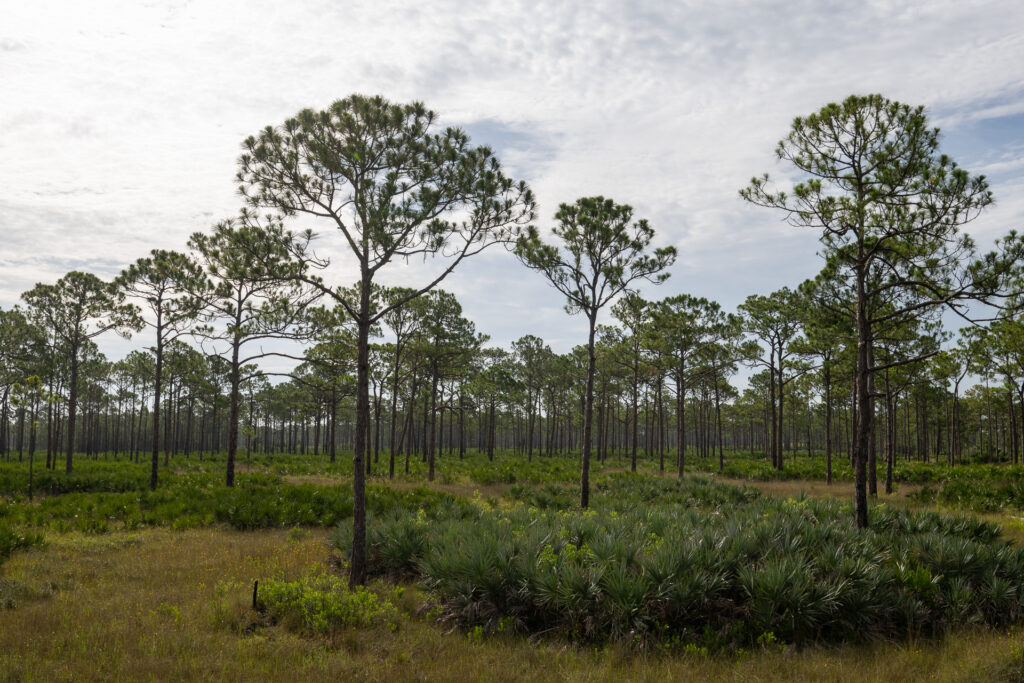Your Questions About the Florida Wildlife Corridor, Answered
Florida is home to a wide range of ecosystems, ranging from forests where black bears wander and panthers roam to ranchlands that are home to generations of cattle and livestock producers.
Protecting the Florida Wildlife Corridor will help safeguard wildlife, wild lands, and Florida’s way of life for future generations.
Want to learn more about the Corridor and why it’s wildly important to Florida’s future? Read on.
 Photo by Sara Sheehy
Photo by Sara Sheehy
What, exactly, is the Florida Wildlife Corridor?
The Florida Wildlife Corridor is a state-wide network of contiguous public and private lands encompassing nearly 18 million acres — more than 40% of the state!
As of 2025, nearly 10 million acres within the Florida Wildlife Corridor are protected from development. These conserved lands include both natural areas and working lands, like ranches and farms. The remaining 8 million acres are yet to be conserved and, without protection, are at risk of development and fragmentation.
 Photo by Sara Sheehy
Photo by Sara Sheehy
Why should I care about the Florida Wildlife Corridor, connected or not?
All Floridians rely on the Florida Wildlife Corridor and the economic, ecological, and adventurous gifts it gives us. Through 2025, the state’s population is expected to grow by 300,000 people each year — gaining roughly the population of another Orlando annually. Maintaining and protecting a connected landscape is critical given the continued growth of Florida’s human population.
The Corridor is home to farms, ranches, ecotourism, and outdoor recreational opportunities that enrich the lives of millions of people daily. Losing these natural and working lands will cause any short-term economic gains from development to be offset by the loss of what makes Florida a destination state for tourists and residents alike.
Did you know? The Florida Wildlife Corridor supports at least 114,000 jobs and provides at least $30 billion in annual value in sectors such as recreation, tourism, agriculture, ranching, and forestry.
Florida is also home to one of the greatest concentrations of endangered species in the country; protecting their habitats helps ensure their survival. The Florida Wildlife Corridor provides habitat to more than 1,700 species, including 60 currently considered at risk of extinction, such as the Florida panther and grasshopper sparrow.
 Photo by the fStop Foundation
Photo by the fStop Foundation
Does conserving the Florida Wildlife Corridor limit economic development?
No. The Florida Wildlife Corridor shows that economic growth and environmental protection can go hand in hand. Farmers, foresters, and ranchers all benefit when their land is protected for generations to come.
And tourism, Florida’s top industry, benefits from the state’s wildlife populations and wild lands remaining strong and resilient. Boating, bird-watching, nature tourism, and commercial and recreational fishing contribute billions of dollars to Florida each year.
 Photo by Sara Sheehy
Photo by Sara Sheehy
Can I explore the Florida Wildlife Corridor for myself?
Yes! The public is welcome to visit large swaths of the Florida Wildlife Corridor including local, state, and national parks, wildlife refuges, and forests, though other areas are off-limits, either to protect species and ecosystems or because they are private lands.
Get inspired for your next trip to the Florida Wildlife Corridor through the eyes of our Live Wildly Adventurists.
 Photo by Sara Sheehy
Photo by Sara Sheehy
Since the Florida Wildlife Corridor Act was passed in 2021, over 400,000 acres have been approved for conservation. Still, more action is needed to protect lands and waterways in the Florida Wildlife Corridor.
Organizations throughout the state, including Live Wildly, are working hard to accelerate the pace of conservation in the Florida Wildlife Corridor and beyond.
Are you inspired? Join the Movement to protect wild Florida.
 Photo by Chrissy Martinez
Photo by Chrissy Martinez

 Photo by
Photo by 